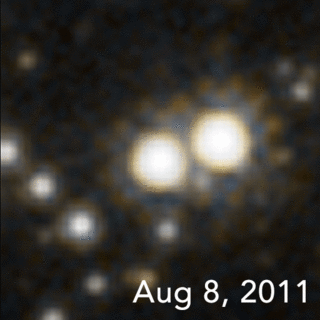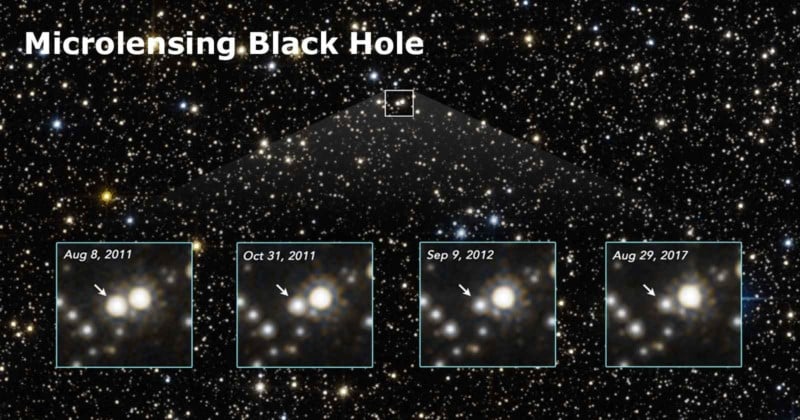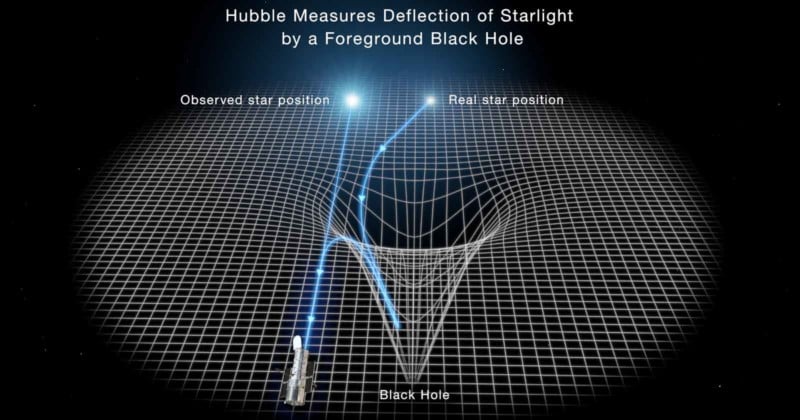Hubble Records Mass and Location of a Black Hole for the First Time Ever
![]()
NASA has announced that it has isolated the mass and location of what could be a “wandering” black hole using the Hubble Space Telescope. This is the first time in the space agency’s history it has been able to achieve this, despite there being over 100 million black holes populating our galaxy.
Up until now, black holes have largely been considered theoretical, with measurements being taken on their influence upon other interstellar bodies, rather than the holes themselves. Measuring the effect it has on the stars around it is how NASA has identified the presence of the black hole in the past.
But after six years of using the Hubble to observe the Carina-Sagittarius spiral arm of our galaxy, NASA was able to detect the black hole traveling through the arm about 5,000 light-years away. Taking a wandering path through the galaxy is unique for this black hole, as scientists believe that most either occupy the core of a galaxy or are paired with a binary system nearby, which is how they can be observed, through its interaction.

But this wandering hole is a solitary traveler in our galaxy, leading scientists to conclude that when the black hole was formed millions of years ago, it received a “kick” from the supernova that created it, which provided the momentum to send it on a journey throughout the galaxy.
“Black holes roaming our galaxy are born from rare, monstrous stars (less than one-thousandth of the galaxy’s stellar population) that are at least 20 times more massive than our Sun,” says the NASA statement announcing the find.
“These stars explode as a supernova, and the remnant core is crushed by gravity into a black hole. Because the self-detonation is not perfectly symmetrical, the black hole may get a kick, and go careening through our galaxy like a blasted cannonball.”
Hubble can’t actually take a picture of the black hole, since it sucks in all light, rather than reflect it. But as the black hole warps space through its interaction, the light coming from surrounding stars is bent and is actually amplified as the black hole travels in front of it, giving astronomers the ability to observe it. Additionally, astronomers are able to rule out the effects of neighboring stars since there is no color shift when the rotating stars move into alignment.

Two teams observed the black hole, using data from Hubble to ascertain the wandering black hole’s position, both coming to slightly different conclusions as to size, but agreeing that the hole is present and largely compact.
Four Times Bigger Than Our Sun
The data was collected using a technique known as “Astrometric microlensing,” which can be used to detect objects that range from the mass of a planet to the mass of a star, regardless of the light they emit. The technique, which was postulated by Albert Einstein in his seminal 1916 paper on general relativity, was developed by astronomers a few years later, to measure a background star being offset by two arcseconds, thereby validating Einstein’s theories.
The Hubble observed the nearby light as it was amplified and warped over a 270-day period, and the teams took another six years to process the data and come to the conclusion that it may be a black hole traveling through our galaxy.

But even though the teams believe that phenomenon is a black hole, they also admit it could be the effects of a nearby neutron star. The estimated mass of the invisible compact object is measured to be between 1.6 and 4.4 times that of the Sun. At the high end of this range, the object would be a black hole; at the low end, it would be a neutron star.
“As much as we would like to say it is definitively a black hole, we must report all allowed solutions. This includes both lower-mass black holes and possibly even a neutron star,” said Jessica Lu of the Berkeley team.
“Whatever it is, the object is the first dark stellar remnant discovered wandering through the galaxy, unaccompanied by another star” Lam added.
The team estimates that the object has a mass of over seven solar masses and is traveling through the Milky Way galaxy at over 100,000 miles an hour.
Image credits: All photos by NASA.